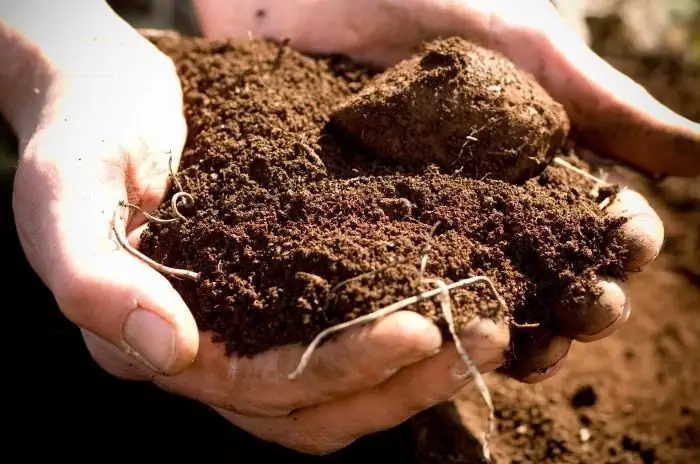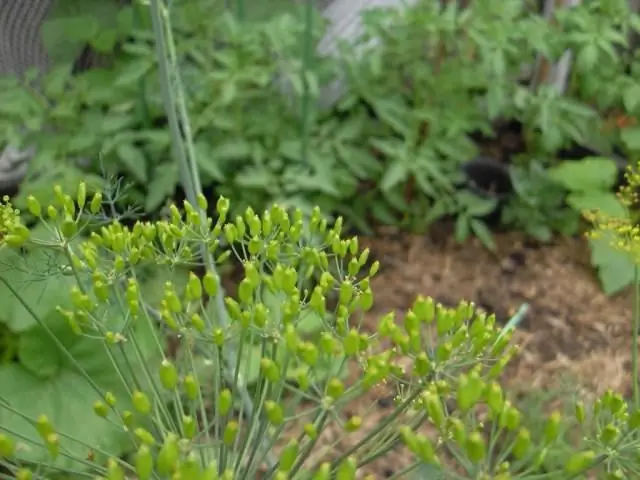2026 Author: Howard Calhoun | [email protected]. Last modified: 2025-01-24 13:10:37
Irrigation and drainage of soils are very important measures aimed at improving the conditions for normal growth and development of plants. Most novice farmers do not have questions about high-quality irrigation, but not everyone knows what drainage is. So why do you need to drain the soil, in what cases to do it, how to properly carry out this procedure and what it will give.
Concept and purpose
So, artificial soil drainage is a set of agricultural measures aimed at reducing the amount of moisture in the soil. Most often, this procedure is carried out in the fields located next to the swampy area. Groundwater in such places is too close to the surface, and an excess of moisture in the ground has a negative impact on the quantity and quality of the crop.

As for the purpose of drainage, it can be very different. In some cases, the farmertries in this way to prevent the development of fungal infections that occur in wet soils, in others - to get rid of the silt that forms in wet places. Also, excessive moisture in the soil leads to a musty and unpleasant smell - it is unlikely that anyone will be pleased to harvest in such conditions.
Soil drainage methods
Get rid of excess moisture in the soil is not so easy as it might seem at first glance. Water in the swampy area constantly flows upward due to the large amount of groundwater, therefore, even if the weather is clear and hot for several days, it is far from certain that the puddles in the fields will completely disappear. Because of this, many farmers resort to artificial land drainage methods.

This is:
- construction of canals for water drainage;
- construction of artificial reservoirs;
- organization of the drainage system;
- raising the soil level;
- planting special crops.
The choice of technology should be determined by the capabilities of the farmer, the features of the relief, the depth of groundwater, the presence or absence of slope, soil composition and many other factors that will be disclosed in the following sections when describing drainage methods.
Drainage channel
Perhaps this is the most common method of draining the soil, which allows you to normalize the level of moisture in the soil in a matter of weeks. In addition, the construction of the canal is a fairly simple and inexpensive procedure. Even novice farmers can carry it out. The channel does not take up too much space and gives the site a beautiful look. The only drawback is the difficulty of finding blockages that prevent water from moving in the right direction.

For the construction of a canal, several excavators are usually used, which start work from the place where the water will flow (ravine or lake). It is desirable to dig the channel in such a way that it has a slight slope, which increases as it approaches the field. Don't be afraid to create a similar element in the center of the plot if most of the moisture is there. By dividing the field with a canal, you will noticeably dry the soil, while losing only a small part of the area for sowing.
Correct formation of the branch line
In most regions, the soil drainage system is based on the formation of diversion channels or trenches with further withdrawal to the well. However, it should be understood that in some areas such a procedure may contribute to lowering the soil. If we are talking about draining a flat area, then it is necessary to lay trenches across the slope. In this way, unwanted landscape changes will be avoided.

In addition, it is necessary to dig trenches and channels according to a certain technology so that the drainage is of the highest quality. For example, the depth of the trench should be from 100 to 120 centimeters (depending on the depth of the underwater waters). If the build is too deepgutter, this will lead to its overflow. However, if the channel is too small, there will be no effect either. As for the walls, they should be made at a slight angle. Twenty degrees is the best option.
Soil drainage system
Sometimes, to drain marsh soils, it is enough to conduct high-quality drainage. Such a technique requires certain financial investments, since it becomes necessary to purchase certain material. However, preference can be given to the drainage system in any case, since this option is considered universal. It is especially important to carry out such a technique if it is not possible to build a channel due to the unsuccessful location of wet areas.
As for the material for drainage, the choice is quite huge. Moreover, each of the options allows you to achieve a certain result, so all methods require a more detailed analysis. In the following sections you will find more detailed information about which drainage is better to use, what advantages this or that material has, what the technology of its introduction into the soil is, and so on.
Potter's drainage
A similar technique is carried out using plastic or clay pipes, which are laid in the ground and help to remove high humidity. It is practically impossible to carry out such a procedure for a huge land plot, therefore the method is most often used in small private gardens to drain a certain area for planting a specific category of crops.

The embedment depth of this building material depends on the type of soil to be drained. The distance between the pipes should be from 4 to 6 meters. The more swampy the area, the more pipes will have to be laid. The number of corners and joints should be minimized so that construction costs are not so high. It is also recommended to put a layer of crushed stone under the pipes to avoid clogging.
Soft drainage
You can get rid of moisture retention in the soil for a long time using a soft drainage system. As the main material, soft textiles and a waterproofing sheet are used, which are laid on top. Also, an additional layer of crushed stone is poured on top, after which the film is placed again.

When creating a soft drainage system, it is recommended to additionally raise the soil layer. To do this, you can order fertile soil, the composition of which is suitable for growing those crops that will be subsequently planted. However, don't overdo it! The maximum layer of soil brought in should be no more than 30 centimeters.
Creating an artificial reservoir
If we are talking about draining a flat area, then you can use the method of creating an artificial reservoir, which is a "drainage tank" for several trenches. Just find the wettest place and start building a small pond there, which would fit all the water from the field. Its depth depends onthe number of drains that it will take into itself.

Quite often, this technique is used if it is necessary not only to drain the site, but to create a special recreation area on it. Some farmers find it quite practical to use such ponds, launching fish for breeding there. However, in this case, you will have to block the channels with a net so that the fish do not swim away from the designated area.
Draining with plants
You can solve the problem of excess moisture by planting trees on the site that actively use water for growth. Of course, such a technique will be much less effective than the construction of channels or a pond, but it does take place in small fields that do not suffer too much from excess moisture. That is, the soil simply needs to be drained a little in order for the growth of crops to be more uniform.
As for the types of trees that can be planted for drainage, the range is very diverse: ash, Tatar maple, downy birch, larch, weeping willow, alder and so on. You can even alternate them with fruit crops to create a real apple or pear orchard in the middle of the field. For decoration, you can plant various shrubs that also consume a lot of water and are resistant to fungal infections.

We hope our article has helped you figure out what soil drainage is and how to properly carry out such a procedure. If you have any questions about thisabout, then watch the short video posted above. It has a lot of useful tips for beginner farmers.
Recommended:
Work permit for work in electrical installations. Rules for work in electrical installations. Work permit

From August 2014, Law No. 328n comes into force. In accordance with it, a new edition of the "Rules on labor protection during the operation of electrical installations" is being introduced
Soil analysis - a comprehensive assessment of the state of the soil cover

Due to man-made activities, the soil becomes a place of storage of a large amount of harmful substances. Soil analysis is used to assess the general ecological state and safety of the soil cover, determine the chemical composition and suitability for agricultural activities
What kind of soil do carrots like? Soil for carrots and beets, onions and dill

Carrots are included in the main list of crops grown by Russian summer residents and gardeners. Like all root crops, this plant is not particularly demanding on development conditions, however, in order to get a rich harvest, it will not be superfluous to initially decide what kind of soil carrots love and correlate its requirements with the capabilities of a particular site
A related profession is The concept, definition, classification of work performed, the performance of labor and related work and payment rules

What are related professions? How are they different from combining and retraining? What professions are related? Consider the example of a teacher and a pharmacist, an accountant and a lawyer. Working related professions. Three ways to master them. Motivation - leadership attitude
Hierarchical work structure: concept and purpose. Project management

Each project has goals and stages of implementation. The implementation of the project implies the existence of goals, certain types of activities, skills and abilities. Each stage requires process control. This is a complex, creative art of coordinating all the resources involved in the implementation of the project: human and material

